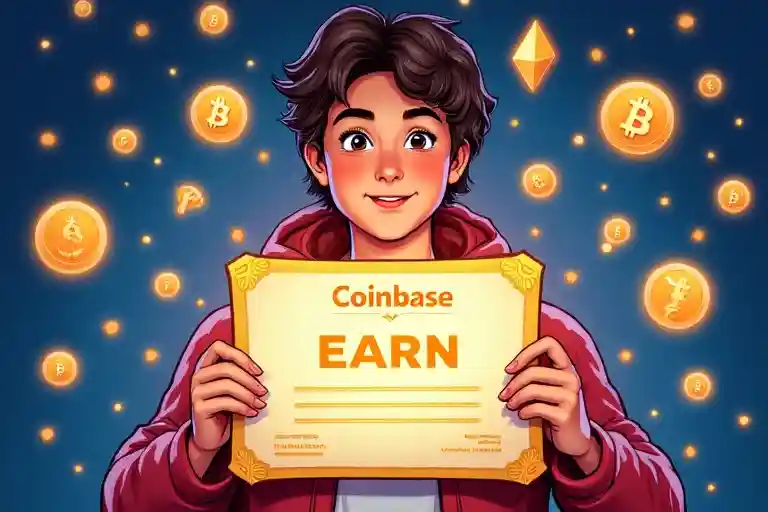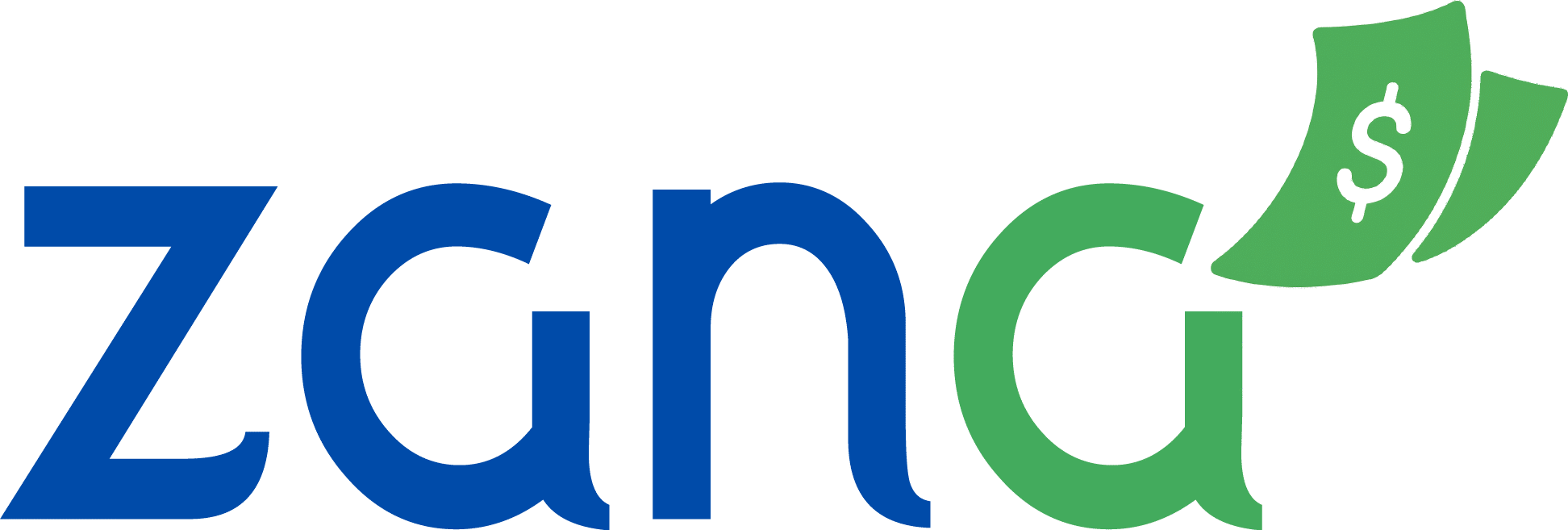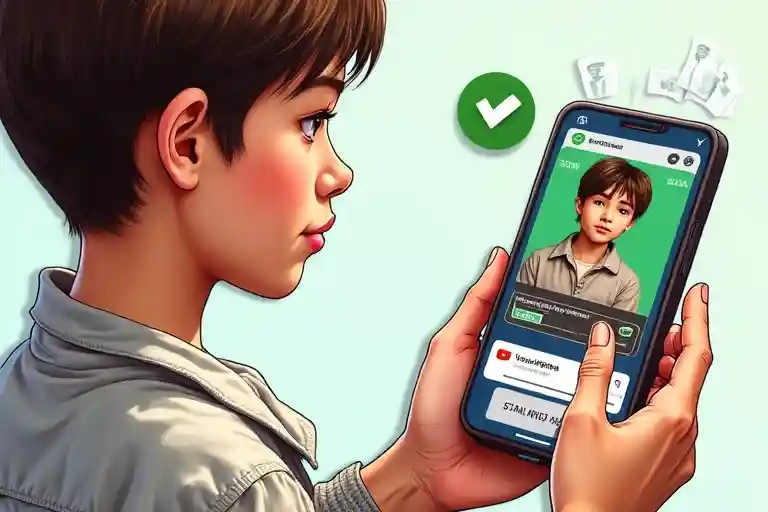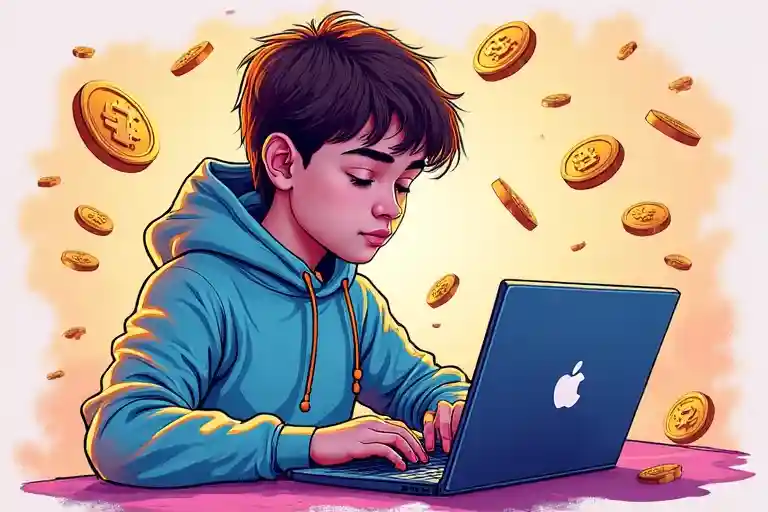Hey everyone! So, you’ve heard the buzz about crypto, right? Maybe you’ve seen TikToks about Bitcoin millionaires or your fave gamer tipping in Ethereum. And now you’re wondering about how to coinbase earn money. Well, guess what? It’s not some far-off dream, and you don’t need a ton of cash to start. I was pretty surprised myself when I first looked into it! There are actual, legit ways for teens like us (with parental permission where needed, of course!) to start dipping their toes into the crypto world using platforms like Coinbase. We’re not talking about risky investments here; we’re focusing on ways to *earn* crypto, sometimes just by learning cool new stuff. This article is your ultimate guide to understanding how you can coinbase earn money, what the popular “learn and earn” programs are all about, how to use the Coinbase app for earnings, and even some tips on staying safe while you do it. We’ll cover how the Coinbase learn and earn crypto programs work, check out the Coinbase earn money app, explore how to get Coinbase earn money free, and so much more. Ready to level up your digital wallet? Let’s get this bread… I mean, crypto!
Before we dive deep, remember this: the world of cryptocurrency can be volatile and confusing. While “earn” programs are generally low-risk because you’re not investing your own money to begin with, it’s crucial to understand what you’re getting into. Always, and I mean ALWAYS, chat with a parent or trusted adult before signing up for anything online, especially when it involves money or digital assets. Think of it like getting a permission slip for a cool new field trip – the crypto field trip! Many platforms, including Coinbase, have age restrictions (usually 18+ for full trading accounts), but some earning opportunities might be accessible with parental guidance or through custodial accounts if available in your region. Safety first, always! This guide is here to show you the ropes for when you *are* eligible or have that adult supervision. Last updated: June 2025.
Coinbase Learn and Earn: Your Gateway to Free Crypto
Okay, so let’s talk about probably the most popular way to coinbase earn money, especially if you’re new to crypto: the Coinbase Learn and Earn program. Imagine getting paid to learn – like, for real! That’s the core idea here. Coinbase partners with different crypto projects (like new coins or tokens) that want to teach people about what they do. So, you watch short videos, read simple explainers, and then answer a few quiz questions. Get them right, and BAM! You get a small amount of that specific crypto dropped into your Coinbase account. It’s like a mini-scholarship for crypto knowledge. I remember when I first tried it; I learned about a new blockchain project and got like $3 worth of their token. It wasn’t a fortune, but hey, free crypto is free crypto, right? And it was actually interesting to learn about the tech behind it. This is a fantastic way to earn cryptocurrency free without investment.
The beauty of Coinbase learn and earn is that it’s super accessible. You don’t need any prior crypto knowledge. The lessons are designed for novices, breaking down complex subjects into chunk-sized, clean-to-understand pieces. Think of these explainer vids on YouTube, but you get a bit something at the quit. The quantities you earn in line with lesson are commonly small, like some greenbacks worth of a specific crypto, but they could add up over time. Plus, you’re diversifying your (small, for now!) crypto portfolio totally free. It’s a win-win: you benefit information AND crypto. It’s like that TikTok meme wherein the person is doing the “it’s unfastened actual property” dance, however for digital coins! Keep an eye at the “Learn and Earn” section of your Coinbase account, as new opportunities pop up often.
How do Coinbase Learn and Earn programs actually work?
It’s quite trustworthy. First, you’ll need a confirmed Coinbase account (again, test the ones age requirements and get parental assist in case you’re underneath 18). Once you are in, navigate to the “Learning Rewards” or “Learn and Earn” segment. You’ll see a listing of available crypto initiatives imparting rewards. Each one will typically have a few brief video instructions and a simple quiz. Watch the lesson, answer the questions, and if you pass, the crypto praise is commonly deposited into your Coinbase account pretty fast. It’s designed to be simple and attractive, so don’t strain approximately the quizzes being high-quality tough. They in reality need you to analyze and earn!
What kind of crypto can you earn?
The types of crypto you can earn through Coinbase learn and earn vary widely. It often includes newer or less well-known altcoins (that’s any crypto that isn’t Bitcoin). This is actually pretty cool because it exposes you to a broader range of the crypto ecosystem beyond just the big names. You might earn tokens related to decentralized finance (DeFi), Web3 infrastructure, gaming, or other innovative areas. For example, you might learn about The Graph (GRT), Amp (AMP), or Stellar Lumens (XLM), among many others that have been featured. It’s a great way to discover projects you might not have found otherwise. Who knows, one of those little bits of crypto you earn could be the next big thing (though, always be realistic, most won’t be!).
Coinbase Earn Money App: Crypto on the Go!
Let’s be real, as teens, our phones are practically glued to our hands. So, having a Coinbase earn money app makes total sense. The main Coinbase app is your central hub for everything, including the “Learn and Earn” opportunities we just talked about. You don’t need a separate app just for earning; it’s all integrated. This makes it super convenient to check for new learning modules or manage any crypto you’ve earned, whether you’re on the bus, waiting for class to start (don’t get caught by your teacher!), or just chilling at home. The app interface is generally user-friendly, designed to be clean and not too overwhelming, even if you’re a crypto newbie.
Using the Coinbase earn app (which is just the regular Coinbase app) for these features means you can get notifications for new chances to earn, track your tiny but growing portfolio, and access all the learning materials easily. Think of it as your pocket-sized crypto classroom and bank, all rolled into one. Just make sure your app is always updated to the latest version for security and new features. And speaking of security, enable all the security features your parents recommend, like two-factor authentication (2FA). It’s like putting a super-strong lock on your digital piggy bank. You wouldn’t want your hard-earned (or hard-learned!) crypto to go poof, right? That’d be a total “oof” moment, as they say on the internet.
Is the Coinbase earn app different from the regular Coinbase app?
Nope! The “Coinbase earn app” isn’t a standalone application. The earning features, primarily “Learn and Earn,” are built directly into the main Coinbase app that you download from the App Store or Google Play Store. This makes it convenient because all your Coinbase activities – buying (if you’re old enough and have funds), selling, storing, and earning – are in one place. It simplifies the user experience, so you’re not juggling multiple apps from the same company. Just look for sections labeled “Learn,” “Rewards,” or “Earn” within the app’s navigation.

Coinbase Earn Money Free: Myth or Reality?
This is a big one: can you *actually* Coinbase earn money free? The short answer is YES, with some caveats. Programs like “Learn and Earn” are genuinely free ways to acquire cryptocurrency. You’re not investing your own money to participate; you’re investing your time and willingness to learn. That’s a pretty sweet deal. Think about it – companies are essentially giving you a sample of their product (their crypto token) in exchange for you learning about it. It’s a marketing strategy for them and an earning opportunity for you. So, if you see “free crypto,” in this context, it’s often legit through these educational programs.
However, always be wary of offers outside of established platforms like Coinbase that sound *too* good to be true (“Get $1000 in Bitcoin FREE today, just click here!”). Those are usually scams, like those sketchy pop-up ads that promise a free iPhone. Stick to reputable sources. Coinbase also occasionally has other promotions, like referral bonuses (if you refer a friend and they sign up and trade, you might both get a small Bitcoin bonus – check the terms for age and activity requirements!) or participating in specific tasks. These are also ways to get Coinbase earn money free, but “Learn and Earn” is the most consistent and accessible for beginners. The key is understanding that “free” here means no monetary investment from your side, but it does require your engagement. It’s not just money appearing out of thin air; you’re providing value by learning or participating.
Are there hidden fees with “Learn and Earn”?
Generally, for the “Learn and Earn” programs themselves, there are no hidden fees for participating and receiving the crypto rewards. The crypto is deposited into your Coinbase account. However, if you later decide to trade that earned crypto for another crypto or sell it for cash (which might have age and verification restrictions), then Coinbase’s standard trading fees would apply to those *transactions*. But the act of learning and earning the initial crypto is free of platform fees. It’s always a good idea to be aware of Coinbase’s overall fee structure, which is available on their website, especially if you plan to do more than just hold your earned crypto. Knowing about potential Coinbase learn and earn score implications or how your earnings translate to your overall portfolio is part of being a savvy user.
Coinbase Learn and Earn Answers: To Cheat or Not to Cheat?
Okay, let’s have a real talk moment. When you’re doing the Coinbase learn and earn quizzes, you might be tempted to just search for “Coinbase learn and earn answers” online. And yeah, you’ll probably find them. But here’s the thing: *should* you? While it might get you the crypto a few seconds faster, you’re totally missing the point! The whole idea is to *learn* something new. The crypto is the bonus, the reward for engaging your brain. If you just copy-paste answers, you’re not actually gaining any knowledge, which is valuable in itself, especially in a new field like crypto. It’s like getting the answers to a video game level; sure, you beat it, but did you have any fun or learn the strategy?
Plus, the quizzes are usually super easy. They’re designed to check if you paid basic attention, not to trick you. Taking the extra minute or two to actually watch the video and understand the concept will serve you much better in the long run. Imagine someone asks you about that crypto you “earned,” and you have no clue what it is or what it does. That’s a bit awkward, right? Like, “Yeah, I have some… uh… ‘Decentralized Oracle Network Token’… no idea what it does, just clicked some buttons.” (Slightly exaggerated, but you get the point!). The real flex isn’t just having the crypto; it’s understanding a bit about the tech you’re holding. So, challenge yourself, even if it’s a small challenge. You got this! Understanding the material is key to truly making money with cryptocurrency beginners in a smart way.
Beyond “Learn and Earn”: Other Ways to Coinbase Earn Money
While “Learn and Earn” is a fantastic starting point, Coinbase offers or facilitates other avenues that can lead to earning, though some might be more advanced or require you to be 18+. It’s good to know what’s out there!
Coinbase Staking
Once you have some crypto (either earned or bought, if you’re of age and have funds), some types of cryptocurrencies allow you to “stake” them. Staking is kind of like earning interest in a savings account. You lock up your crypto for a period to help support the operations and security of that blockchain network. In return, you get rewards, usually in the form of more of that same crypto. Coinbase makes staking easy for certain eligible cryptocurrencies. You’ll need to check which coins offer staking rewards on Coinbase and what the terms are (e.g., minimum amounts, lock-up periods, and the Annual Percentage Yield or APY). This is a more passive way to potentially grow your crypto holdings, but it does come with its own risks, like the value of the staked crypto dropping. And, again, this is typically for users 18+. For teens, this is something to learn about for the future, or discuss with a parent who manages an account.
Coinbase Wallet and DeFi
The Coinbase Wallet is a separate app from the main Coinbase app. It’s a self-custody wallet, meaning you control your private keys (and your crypto). This wallet can open up the world of Decentralized Finance (DeFi) and other Web3 applications. Through DeFi apps (dapps), you might find opportunities like lending your crypto to earn interest or participating in liquidity pools. However, BEWARE: DeFi is like the Wild West of crypto. It can be very complex, and the risks are significantly higher. This is generally *not* recommended for beginners or younger teens due to the complexities and risks of smart contract bugs or impermanent loss. But, learning about it through safe resources can be part of your crypto education.
Airdrops and Faucets (External to Coinbase, but relevant)
While not directly a Coinbase “earn” feature, having a Coinbase account/wallet can be useful for participating in things like airdrops or using crypto faucets.
* **Airdrops:** Sometimes, new crypto projects will “airdrop” free tokens to existing crypto holders (e.g., people holding ETH or using certain wallets) as a way to distribute their tokens and build a community. Keeping an eye on resources like Top 10 Upcoming Crypto Airdrops in 2025 (UPDATED) or Crypto Airdrops List May 2025 can help you find potential opportunities, though always be cautious and research thoroughly to avoid scams.
* **Crypto Faucets:** These are websites or apps that give out tiny amounts of cryptocurrency for completing small tasks, like watching ads or solving captchas. The amounts are minuscule, like tiny drips from a faucet. While some people use them, the time investment for the reward is often very low. If you’re curious, you might look into lists like “CoinbaseBest Crypto Faucets 2025” but again, manage your expectations. These are usually ways to get crypto earnings earn crypto free, but very slowly.
It’s important to note that exploring DeFi, airdrops, or faucets usually means moving crypto out of your main Coinbase account into a self-custody wallet like Coinbase Wallet, which comes with the responsibility of managing your own keys and security. This is a bigger step and should be taken with extreme caution and, for teens, definitely with parental involvement.
Understanding Coinbase Wallet for Your Earnings
So we mentioned the Coinbase Wallet. What’s the deal with it, and how does it relate to your efforts to coinbase earn money? The main Coinbase platform (Coinbase.com or the Coinbase app) is a custodial exchange. This means they hold your crypto for you, much like a bank holds your money. It’s generally easier for beginners. The Coinbase Wallet, on the other hand, is a non-custodial or self-custody wallet. This means *you* hold the “keys” to your crypto. Think of it as having cash in your own physical wallet versus money in a bank account. With your own wallet, you have more control and can access a wider range of decentralized applications (dapps), which can sometimes offer more earning opportunities, like some advanced staking or DeFi protocols.
However, with great power comes great responsibility, as Spider-Man’s uncle wisely said! If you lose your private keys or your 12-word recovery phrase for your Coinbase Wallet, your crypto is GONE. Forever. Poof! There’s no customer service to call to get it back. So, while the Wallet can open doors to more ways to potentially earn (and also more ways to lose crypto if you’re not careful!), it requires a higher level of understanding and security practices. For most teens starting out with “Learn and Earn,” the main Coinbase platform is perfectly fine and simpler to manage. If you do decide to explore the Coinbase Wallet with a parent, make sure you understand how to *securely* back up your recovery phrase (offline, in multiple safe places!).

Safety First: Protecting Your Coinbase Earn Money Journey
Alright, this is SUPER important. Whenever there’s money involved, even small amounts of crypto you coinbase earn money with, scammers will be lurking. They’re like those annoying internet pop-ups, but way more dangerous. Here’s how to keep your crypto safe, especially as a teen online:
- Parental Guidance, ALWAYS: I’ve said it before, I’ll say it again. Talk to your parents or a trusted adult before signing up for Coinbase or any financial platform. They can help you understand the terms, navigate the platform, and ensure you’re following any age requirements. Many platforms officially require users to be 18+. If you’re younger, your parents might need to set up an account that they manage with you.
- Strong, Unique Passwords: Don’t use “password123” or your dog’s name. Create a strong, unique password for Coinbase (and a different one for your email!). Use a mix of uppercase letters, lowercase letters, numbers, and symbols. Think of it like a secret handshake only you and the platform know.
- Two-Factor Authentication (2FA): This is a MUST. 2FA adds an extra layer of security. Even if someone gets your password (eek!), they’d still need access to your phone or an authenticator app to log in. Coinbase offers this – enable it!
- Beware of Phishing Scams: Scammers send fake emails or create fake websites that look like Coinbase to try and steal your login details. ALWAYS double-check the website URL before logging in. It should be `https://www.coinbase.com`. Don’t click suspicious links in emails or DMs. Coinbase will *never* ask for your password or 2FA codes via email or social media. That’s a huge red flag, like seeing a TikTok dance challenge that involves juggling angry cats – just don’t do it!
- Private Key Protection (for Coinbase Wallet): If you venture into using the Coinbase Wallet (the self-custody one), your recovery phrase (those 12 words) is EVERYTHING. Never share it with anyone. Never store it digitally (like in a notes app or email). Write it down and keep it in a super safe, offline place (or two!).
- If It Sounds Too Good To Be True…: It probably is. Free money with no effort? Someone DMing you on Discord promising to triple your crypto if you send it to them? SCAM! Legit ways to coinbase earn money like “Learn and Earn” are clear and don’t ask for your existing crypto.
Staying safe online is a continuous effort. It’s like keeping your room clean; you gotta keep doing it! By being cautious and informed, you can explore how to coinbase earn money more securely. For more insights on earning crypto safely as a teen, check out this guide for teens on crypto earnings.
Comparing Coinbase Earning Methods
To give you a clearer picture, let’s break down some of the common ways you might encounter to coinbase earn money or crypto in general, keeping in mind suitability for teens:
| Method | Effort Level | Potential Earnings | Risk Level (for Teens) | Teen Suitability (with parental guidance) | Key Takeaway |
|---|---|---|---|---|---|
| Coinbase Learn & Earn | Low (watch videos, short quizzes) | Small amounts of various cryptos | Very Low | High (primary method discussed) | Great for learning and getting started with zero financial investment. |
| Coinbase Staking (on main platform) | Low (once set up) | Varies by crypto (APY) | Low to Medium (market volatility, lock-up periods) | Medium (Likely 18+, or via parent’s account; more complex) | Earn rewards on crypto you already hold. Understand the terms. |
| Coinbase Referrals | Low (share a link) | Small Bitcoin bonus (if terms met) | Very Low | Medium (check age/activity terms) | Easy if you have friends interested, but relies on them signing up and trading. |
| Using Coinbase Wallet for DeFi/Dapps | High (requires research, active management) | Variable (can be higher, but so can losses) | High to Very High | Low (generally not for beginners or young teens due to complexity and risk) | Advanced; requires deep understanding and caution. |
| External Airdrops | Medium (research, find opportunities, claim) | Variable (often small, sometimes valuable) | Medium to High (scam risk, value uncertainty) | Low to Medium (lots of scams to navigate, needs careful research) | Can be a way to get new tokens, but diligence is key. |
| External Crypto Faucets | High (repetitive small tasks) | Extremely Small | Low (mostly time-wasting, some shady sites) | Low (very low return on time invested) | Generally not worth the effort for most. |
This table should help you see that when it comes to how to coinbase earn money as a teen, focusing on “Learn and Earn” is often the best and safest starting point. It’s designed for education and has a low barrier to entry. Remember, the goal isn’t to get rich quick; it’s to learn and maybe pick up some interesting crypto along the way!
As you explore these options, especially anything beyond the basic Learn and Earn, continuous learning is key. The crypto space changes FAST – faster than TikTok trends! What’s hot today might be old news tomorrow. Staying updated through reliable sources (not just random influencers promising Lambos) is crucial. And always, always prioritize security and consult with a trusted adult. Your journey to coinbase earn money should be fun and educational, not stressful or risky.
Conclusion
So, there you have it! Your starter guide to how you can coinbase earn money, especially as a curious teen. We’ve seen that programs like Coinbase Learn and Earn offer a legit and super accessible way to get your first bits of cryptocurrency simply by learning about new projects. It’s not about getting rich overnight; it’s about education and dipping your toes into the innovative world of digital assets in a low-risk way. We’ve touched on the Coinbase earn money app, how to get Coinbase earn money free through learning, why just looking up Coinbase learn and earn Answers isn’t the vibe, and even peeked at other avenues like staking (with caution!). Remember, always prioritize safety: use strong passwords, enable 2FA, be super wary of scams, and most importantly, keep your parents or a trusted adult in the loop, especially with age restrictions on platforms.
The crypto world is exciting, a bit wild, and definitely evolving. By starting with trusted platforms and educational resources, you’re building a solid foundation. Who knows where this journey might take you? Maybe you’ll discover a passion for blockchain technology or digital art through NFTs! Your first step could be learning about a new coin on Coinbase today. What do you think – ready to explore? Don’t forget to check out our other articles on making money on crypto for more ideas!
What are your thoughts? Did you try any of these methods? Share your experiences (safely!) in the comments below or even make a TikTok about your learning journey – tag us if you do! For the latest updates on earning platforms and crypto regulations relevant to teens, keep checking back with us here at Zana Website. We’re always on the lookout for fresh, safe ways for you to learn and earn. And why not sign up for our newsletter to get the latest tips straight to your inbox?
Ultimately, the most valuable thing you can gain from trying to coinbase earn money is knowledge. The crypto itself is a cool bonus!
Frequently Asked Questions
1. Can you really make money on Coinbase?
Yes, you can make money on Coinbase, primarily through its “Learn and Earn” programs where you earn crypto for completing educational modules. Other ways include staking rewards (earning interest on crypto you hold), referral bonuses, and potentially through trading if you are of age and understand the risks. However, remember that crypto values can be volatile.
2. How to get $200 free in Coinbase?
Offers for specific large amounts like “$200 free” often come from special promotions, high-value sign-up bonuses (which may require significant trading volume), or by accumulating earnings over time through various programs like Learn and Earn or staking. Always check the current promotions directly on Coinbase’s official website, as these offers change frequently and have specific terms and conditions.
3. How do I get $10 from Coinbase?
You can often get $10 (or similar small amounts) on Coinbase through their “Learn and Earn” programs by completing a few educational modules. Sometimes, Coinbase offers referral bonuses where both you and a friend might get $10 in Bitcoin when they sign up and make a qualifying trade. Check the “Learn and Earn” section or current referral program details.
4. Does Coinbase still do learn to earn?
Yes, Coinbase continues to offer its “Learn and Earn” program, also known as Learning Rewards. These programs allow users to earn small amounts of various cryptocurrencies by watching short educational videos about different crypto projects and then answering simple quizzes. New learning opportunities are added periodically, so it’s worth checking the platform regularly.









